Interventions for treating leg ulcers in people with sickle cell disease
- PMID: 34559425
- PMCID: PMC8407242
- DOI: 10.1002/14651858.CD008394.pub4
Interventions for treating leg ulcers in people with sickle cell disease
Abstract
Background: The frequency of skin ulceration makes an important contributor to the morbidity burden in people with sickle cell disease. Many treatment options are available to the healthcare professional, although it is uncertain which treatments have been assessed for effectiveness in people with sickle cell disease. This is an update of a previously published Cochrane Review.
Objectives: To assess the clinical effectiveness and harms of interventions for treating leg ulcers in people with sickle cell disease.
Search methods: We searched the Cochrane Cystic Fibrosis and Genetic Disorders Group's Haemoglobinopathies Trials Register. We searched LILACS (1982 to January 2020), ISI Web of Knowledge (1985 to January 2020), and the Clinical Trials Search Portal of the World Health Organization (January 2020). We checked the reference lists of all the trials identified. We also contacted those groups or individuals who may have completed relevant randomised trials in this area. Date of the last search of the Cochrane Cystic Fibrosis and Genetic Disorders Group's Haemoglobinopathies Trials Register: 13 January 2020; date of the last search of the Cochrane Wounds Group Trials Register: 17 February 2017.
Selection criteria: Randomised controlled trials of interventions for treating leg ulcers in people with sickle cell disease compared to placebo or an alternative treatment.
Data collection and analysis: Two authors independently selected studies for inclusion. All three authors independently assessed the risk of bias of the included studies and extracted data. We used GRADE to assess the quality of the evidence.
Main results: Six studies met the inclusion criteria (198 participants with 250 ulcers). Each trial investigated a different intervention and within this review we have grouped these as systemic pharmaceutical interventions (L-cartinine, arginine butyrate, isoxsuprine) and topical pharmaceutical interventions (Solcoseryl® cream, arginine-glycine-aspartic acid (RGD) peptide dressing and topical antibiotics). No trials on non-pharmaceutical interventions were included in the review. All trials had an overall unclear or high risk of bias, and drug companies sponsored four of them. We were unable to pool findings due to the heterogeneity in outcome definitions, and inconsistency between the units of randomisation and analysis. Three interventions reported on the change in ulcer size (arginine butyrate, RGD peptide, L-cartinine). Of these, only arginine butyrate showed a reduction of ulcer size compared with a control group, mean reduction -5.10 cm² (95% CI -9.65 to -0.55), but we are uncertain whether this reduces ulcer size compared to standard care alone as the certainty of the evidence has been assessed as very low. Three trials reported on complete leg ulcer closure (isoxsuprine, arginine butyrate, RGD peptide matrix; very low quality of evidence). None reported a clinical benefit. No trial reported on: the time to complete ulcer healing; ulcer-free survival following treatment for sickle cell leg ulcers; quality of life measures; incidence of amputation or harms.
Authors' conclusions: Given the very low quality of the evidence identified in this updated Cochrane Review we are uncertain whether any of the assessed pharmaceutical interventions reduce ulcer size or result in leg ulcer closure in treated participants compared to controls. However, this intervention was assessed as having a high risk of bias due to inadequacies in the single trial report. Other included studies were also assessed as having an unclear or high risk of bias. The harm profile of the all interventions remains inconclusive.
پیشینه: فراوانی زخمهای پوستی نقش مهمی را در بار (burden) موربیدیتی در افراد مبتلا به بیماری سلول داسیشکل ایفا میکند. گزینههای درمانی بسیاری برای این وضعیت در دسترس هستند، اگرچه مشخص نیست که کدام درمانها برای اثربخشی در افراد مبتلا به بیماری سلول داسیشکل ارزیابی شدهاند. این یک بهروزرسانی از مرور کاکرین است که قبلا منتشر شد. اهداف: ارزیابی اثربخشی و آسیبهای ناشی از مداخلات برای درمان زخمهای پا در افراد مبتلا به بیماری سلول داسیشکل. روشهای جستوجو: به جستوجو در پایگاه ثبت کارآزماییهای هموگلوبینوپاتیها، مربوط به گروه فیبروز کیستیک و اختلالات ژنتیکی در کاکرین پرداختیم. LILACS (1982 تا ژانویه 2020)، ISI Web of Knowledge (1985 تا ژانویه 2020) و پورتال جستوجوی کارآزمایی بالینی سازمان جهانی بهداشت (ژانویه 2020) را جستوجو کردیم. فهرست منابع همه کارآزماییهای شناسایی شده را بررسی کردیم. همچنین با آن گروهها یا افرادی که ممکن است کارآزماییهای تصادفیسازی شده مرتبط و پایان یافته داشته باشند، تماس گرفتیم. تاریخ آخرین جستوجو در پایگاه ثبت کارآزماییهای هموگلوبینوپاتیها مربوط به گروه فیبروز کیستیک و اختلالات ژنتیکی در کاکرین: 13 ژانویه 2020 ؛ تاریخ آخرین جستوجو در پایگاه ثبت کارآزماییهای گروه زخم در کاکرین: 17 فوریه 2017. معیارهای انتخاب: کارآزماییهای تصادفیسازی و کنترل شده از مداخلات برای درمان زخمهای پا در افراد مبتلا به بیماری سلول داسیشکل در مقایسه با دارونما (placebo) یا درمان جایگزین. گردآوری و تجزیهوتحلیل دادهها: دو نویسنده بهطور مستقل از هم مطالعات را برای ورود انتخاب کردند. هر سه نویسنده بهطور مستقل از هم خطر سوگیری (bias) مطالعات وارد شده را ارزیابی و دادهها را استخراج کردند. از رویکرد درجهبندی توصیه، ارزیابی، توسعه و ارزشیابی (GRADE) برای ارزیابی کیفیت شواهد استفاده کردیم. نتایج اصلی: شش مطالعه (198 شرکتکننده با 250 زخم) واجد معیارهای ورود بودند. هر کارآزمایی، مداخله متفاوتی را بررسی کرده و در این مرور، این موارد را در قالب مداخلات دارویی سیستمیک (ال‐کارنیتین (L‐cartinine)، آرژنین بوتیرات (arginine butyrate)، ایزوکسوپرین (isoxsuprine)) و مداخلات دارویی موضعی (کرم سولکوسریل (®Solcoseryl)؛ پانسمان پپتیدی آرژنین‐گلیسین‐آسپارتیک اسید (arginine‐glycine‐aspartic acid; RGD) و آنتیبیوتیکهای موضعی) گروهبندی کردیم. هیچ کارآزمایی در مورد مداخلات غیر‐دارویی در این مرور وارد نشد. بهطور کلی، همه کارآزماییها خطر سوگیری بالا یا نامشخصی داشتند، و شرکتهای دارویی از هر چهار کارآزمایی حمایت مالی کردند. به دلیل ناهمگونی در تعاریف پیامد، و ناهمگونی میان واحدهای تصادفیسازی و تجزیهوتحلیل، قادر به تجمیع یافتهها نبودیم. سه مداخله در مورد تغییر در اندازه زخم گزارش شدند (آرژنین بوتیرات، پپتید RGD، ال‐کارنیتین). از میان آنها، فقط آرژنین بوتیرات در مقایسه با گروه کنترل کاهش اندازه زخم را، با میانگین کاهش 5.10‐ سانتیمتر مربع ( 95% CI؛ 9.65‐ تا 0.55‐)، نشان داد، اما مطمئن نیستیم که باعث کاهش اندازه زخم در مقایسه با مراقبتهای استاندارد بهتنهایی میشود یا خیر، زیرا قطعیت شواهد در سطح بسیار پائین بود. سه کارآزمایی در مورد بسته شدن کامل زخم پا گزارش دادند (ایزوکسوپرین؛ آرژنین بوتیرات؛ ماتریکس پپتید RGD؛ شواهد با کیفیت بسیار پائین). هیچکدام مزایای بالینی را گزارش نکردند. هیچیک از کارآزماییها گزارشی را از این موارد ارائه نکردند: زمان لازم تا ترمیم کامل زخم، بقای بیمار بدون زخم به دنبال درمان زخمهای پای ناشی از سلول داسیشکل، معیارهای کیفیت زندگی، بروز آمپوتاسیون یا آسیبها. نتیجهگیریهای نویسندگان: با توجه به کیفیت بسیار پائین شواهد به دست آمده در این بهروزرسانی مرور کاکرین، مطمئن نیستیم که هر یک از مداخلات دارویی ارزیابی شده در مقایسه با گروههای کنترل، اندازه زخم را کاهش داده یا منجر به بسته شدن زخم پا در شرکتکنندگان تحت درمان میشود یا خیر. با این حال، این مداخله به دلیل وجود ناکفایتیها در گزارش کارآزمایی، با خطر سوگیری بالا ارزیابی شد. سایر مطالعات وارد شده نیز با خطر سوگیری بالا یا نامشخص ارزیابی شدند. مشخصات آسیب همه مداخلات بینتیجه میماند.
Contexte: La fréquence des ulcérations cutanées contribue de manière importante à la charge de morbidité des personnes atteintes de drépanocytose. De nombreuses options de traitement sont à la disposition des professionnels de la santé, bien qu'on ne sache pas pour quels traitements a été vérifiée l'efficacité chez les personnes atteintes de drépanocytose. Il s’agit de la mise à jour d'une revue Cochrane déjà publiée.
Objectifs: Évaluer l'efficacité clinique et les risques des interventions pour le traitement des ulcères de jambe chez les personnes atteintes de drépanocytose. STRATÉGIE DE RECHERCHE DOCUMENTAIRE: Nous avons effectué des recherches dans le registre des essais sur les hémoglobinopathies du groupe Cochrane sur la mucoviscidose et les autres maladies génétiques. Nous avons effectué des recherches dans LILACS (1982 à janvier 2020), ISI Web of Knowledge (1985 à janvier 2020) et le Système d'enregistrement international des essais cliniques de l'OMS (ICTRP) (janvier 2020). Nous avons examiné les références bibliographiques de tous les essais identifiés. Nous avons également contacté des groupes ou des personnes susceptibles d'avoir réalisé des essais randomisés pertinents dans ce domaine. Date de la dernière recherche dans le registre des essais sur les hémoglobinopathies du groupe Cochrane sur la mucoviscidose et les autres maladies génétiques : 13 janvier 2020 ; date de la dernière recherche dans le registre des essais du groupe Cochrane sur les plaies et contusions: 17 février 2017. CRITÈRES DE SÉLECTION: Essais contrôlés randomisés d'interventions pour le traitement des ulcères de jambe chez les personnes atteintes de drépanocytose, comparés à un placebo ou à un traitement alternatif. RECUEIL ET ANALYSE DES DONNÉES: Deux auteurs ont sélectionné de manière indépendante les études à inclure. Les trois auteurs ont, de manière indépendante, évalué le risque de biais des études incluses et extrait les données. Nous avons utilisé GRADE pour évaluer la qualité des données probantes. RÉSULTATS PRINCIPAUX: Six études remplissaient les critères d'inclusion (198 participants au total avec 250 ulcères). Chaque essai a porté sur une intervention différente et, dans le cadre de cette étude, nous les avons regroupées en interventions pharmaceutiques systémiques (L‐cartinine, arginine butyrate, isoxsuprine) et en interventions pharmaceutiques topiques (crème Solcoseryl®, pansement de peptides arginine‐glycine‐acide aspartique (RGD) et antibiotiques topiques). Nous n’avons pas inclus dans la revue d’essais portant sur des interventions non pharmaceutiques. Tous les essais présentaient un risque de biais global incertain ou élevé, et les sociétés pharmaceutiques en ont parrainé quatre. Nous n'avons pas pu regrouper les résultats en raison de l'hétérogénéité des définitions des critères de jugement et de l'incohérence entre les unités de randomisation et d'analyse. Trois interventions avaient rapporté le changement de taille de l'ulcère (butyrate d'arginine, peptides RGD, L‐carnitine). Parmi ceux‐ci, seul le butyrate d'arginine a montré une réduction de la taille de l'ulcère par rapport à un groupe de contrôle, réduction moyenne de ‐5,10 cm² (IC à 95 % ‐9,65 à ‐0,55), mais nous ne savons pas si cela réduit la taille de l'ulcère par rapport aux soins standard uniquement car le niveau de confiance des données probantes a été évaluée comme très faible. Trois essais ont rapporté sur la fermeture complète de l'ulcère de jambe (isoxsuprine, butyrate d'arginine, matrice de peptides RGD ; données probantes d’un niveau de confiance très faible). Les essais n’ont pas rapporté un bénéfice clinique. Les essais n’ont pas rapporté sur: le temps nécessaire à la guérison complète de l'ulcère ; survie sans ulcère après traitement des ulcères de jambe chez les patients atteints de drépanocytose ; les mesures de la qualité de vie ; l'incidence de l'amputation ou les risques.
Conclusions des auteurs: Étant donné la très faible qualité des données probantes identifiées dans cette mise à jour de la revue Cochrane, nous ne sommes pas certains que les interventions pharmaceutiques évaluées réduisent la taille des ulcères ou entraînent une fermeture des ulcères de jambe chez les participants traités par rapport aux témoins. Toutefois, cette intervention a été estimée à risque élevé de biais en raison de lacunes dans l'unique rapport d'essai. D'autres études incluses ont également été évaluées comme présentant un risque de biais incertain ou élevé. Le profil de risque de toutes les interventions reste peu concluant.
Antecedentes: La frecuencia de ulceración de la piel contribuye de forma importante a la carga de morbilidad de los pacientes con anemia de células falciformes. El profesional sanitario dispone de muchas opciones de tratamiento, aunque se desconoce qué tratamientos se han evaluado con respecto a la efectividad en pacientes con anemia de células falciformes. Esta es una actualización de una revisión Cochrane publicada anteriormente.
Objetivos: Evaluar la efectividad clínica y los efectos perjudiciales de las intervenciones para el tratamiento de las úlceras de las piernas en pacientes con anemia de células falciformes. MÉTODOS DE BÚSQUEDA: Se realizaron búsquedas en el Registro de ensayos de hemoglobinopatías del Grupo Cochrane de Fibrosis quística y enfermedades genéticas (Cochrane Cystic Fibrosis and Genetic Disorders Group). Se hicieron búsquedas en LILACS (1982 hasta enero de 2020), ISI Web of Knowledge (1985 hasta enero de 2020) y en el Clinical Trials Search Portal de la Organización Mundial de la Salud (enero de 2020). Se comprobaron las listas de referencias de todos los ensayos identificados. Se estableció contacto con grupos o individuos que hubieran completado ensayos aleatorizados relevantes en esta área. Fecha de la búsqueda más reciente en el Registro de ensayos de hemoglobinopatías del Grupo Cochrane de Fibrosis quística y enfermedades genéticas: 13 de enero de 2020; fecha de la última búsqueda en el registro de ensayos del Grupo Cochrane de Heridas: 17 de febrero de 2017. CRITERIOS DE SELECCIÓN: Ensayos controlados aleatorizados de intervenciones para el tratamiento de las úlceras de las piernas en pacientes con anemia de células falciformes en comparación con placebo o un tratamiento alternativo. OBTENCIÓN Y ANÁLISIS DE LOS DATOS: Dos autores de la revisión evaluaron de forma independiente los estudios para inclusión. Los tres autores de la revisión, de forma independiente, evaluaron el riesgo de sesgo de los estudios incluidos y extrajeron los datos. Para evaluar la calidad general de la evidencia se utilizaron los criterios GRADE.
Resultados principales: Seis estudios cumplieron los criterios de inclusión (198 participantes con 250 úlceras). Cada ensayo investigó una intervención diferente que en esta revisión se agruparon en intervenciones farmacéuticas sistémicas (L‐carnitina, butirato de arginina, isoxsuprina) e intervenciones farmacéuticas tópicas (crema Solcoseryl®, apósito de matriz peptídica de arginina‐glicina‐ácido aspártico (RGD), antibióticos tópicos). En la revisión no se incluyeron ensayos sobre intervenciones farmacéuticas. Todos los ensayos tuvieron un riesgo general de sesgo poco claro o alto y cuatro recibieron patrocinio de empresas farmacéuticas. No fue posible agrupar los resultados debido a la heterogeneidad en las definiciones de los desenlaces y a la incoherencia entre las unidades de asignación al azar y las de análisis. Tres intervenciones informaron sobre el cambio en el tamaño de la úlcera (butirato de arginina, apósito de matriz peptídica RGD, L‐carnitina). De estas, sólo el butirato de arginina mostró una reducción del tamaño de la úlcera en comparación con un grupo de control, reducción media ‐5,10 cm² (IC del 95%: ‐9,65 a ‐0,55), pero no se sabe si esto reduce el tamaño de la úlcera en comparación con la atención estándar sola, ya que la certeza de la evidencia se ha considerado muy baja. Tres ensayos informaron sobre el cierre completo de la úlcera de la pierna (isoxsuprina, butirato de arginina, matriz peptídica RGD; evidencia de calidad muy baja). Ninguno informó un beneficio clínico. Ningún ensayo informó sobre el tiempo transcurrido hasta la cicatrización completa de la úlcera; la supervivencia sin úlceras después del tratamiento de las úlceras de las piernas en pacientes con anemia de células falciformes, medidas de calidad de vida, la incidencia de amputación o los efectos perjudiciales.
Conclusiones de los autores: Dada la muy baja calidad de la evidencia identificada en esta revisión Cochrane actualizada, no se sabe con certeza si alguna de las intervenciones farmacéuticas evaluadas reduce el tamaño de la úlcera o provoca el cierre de la úlcera de la pierna en participantes tratados comparados con controles. Sin embargo, esta intervención se consideró con alto riesgo de sesgo debido a las deficiencias en el informe del único ensayo. Otros estudios incluidos también se consideraron con riesgo de sesgo alto o poco claro. El perfil de efectos perjudiciales de todas las intervenciones continúa sin ser concluyente.
Copyright © 2021 The Cochrane Collaboration. Published by John Wiley & Sons, Ltd.
Conflict of interest statement
In 2004 Arturo Martí‐Carvajal was employed by Eli Lilly to run a four‐hour workshop on 'How to critically appraise clinical trials on osteoporosis and how to teach this'. This activity was not related to his work with the Cochrane Collaboration or any Cochrane Review.
In 2007 Arturo Martí‐Carvajal was employed by Merck to run a four‐hour workshop 'How to critically appraise clinical trials and how to teach this'. This activity was not related to his work with The Cochrane Collaboration or any Cochrane Review.
Jennifer Knight‐Madden and María José Martínez‐Zapata: none known.
Figures

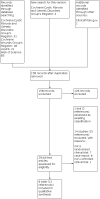
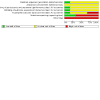



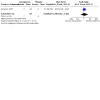
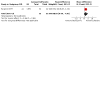
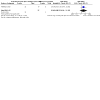

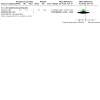
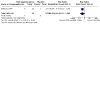
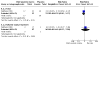
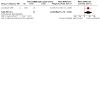
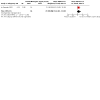
Update of
-
Interventions for treating leg ulcers in people with sickle cell disease.Cochrane Database Syst Rev. 2014 Dec 8;2014(12):CD008394. doi: 10.1002/14651858.CD008394.pub3. Cochrane Database Syst Rev. 2014. Update in: Cochrane Database Syst Rev. 2021 Jan 9;1:CD008394. doi: 10.1002/14651858.CD008394.pub4. PMID: 25485858 Free PMC article. Updated.
References
References to studies included in this review
Baum 1987 {published data only}
-
- Baum KF, MacFarlane DE, Maude GH, Serjeant GR. Topical antibiotics in chronic sickle cell leg ulcers. Transactions of the Royal Society of Tropical Medicine and Hygiene 1987;81(5):847-9. [PMID: ] - PubMed
-
- Macfarlane DE, Baum KF, Maude GH, Serjeant GR. Topical antibiotics in chronic sickle-cell leg ulcers. West Indian Medical Journal 1986;35 Suppl:46-7.
La Grenade 1993 {published data only}
-
- La Grenade L, Thomas PW, Serjeant GR. A randomized controlled trial of solcoseryl and duoderm in chronic sickle-cell ulcers. West Indian Medical Journal 1993;42(3):121-3. [PMID: ] - PubMed
McMahon 2010 {published data only}
-
- Koshy M, Askin M, McMahon L, Adams-Graves P, Halloway L, Faller DV, et al. Arginine butyrate in sickle cell leg ulcers: interim findings of a phase II trial. In: The National Sickle Cell Disease Program Annual Meeting Conference Proceedings. 2000:175a.
-
- Koshy M, Askin M, McMahon L, Adams-Graves P, Halloway L, Faller DV, et al. Arginine butyrate in sickle cell leg ulcers: interim findings of a randomized phase II trial. In: The National Sickle Cell Disease Program Annual Meeting Conference Proceedings. 2001. [ABSTRACT NO.: 124]
-
- Koshy M, Edinburgh L, McMahon L, Adams-Graves P, Halloway L, Faller DV, et al. Arginine butyrate in sickle cell leg ulcers: interim findings of a phase II trial. Blood 1999;Suppl:417a.
-
- McMahon L, Tamary H, Askin M, Adams-Graves P, Eberhardt RT, Sutton M, et al. A randomized phase II trial of Arginine Butyrate with standard local therapy in refractory sickle cell leg ulcers. British Journal of Haematology 2010;151(5):516-24. [PMID: ] - PubMed
-
- McMahon LC, Askin M, Koshy M, Tamary H, Atweh GF, Adam-Graves P, et al. A phase II trial of arginine butyrate in refractory sickle cell leg ulcers. Blood 2002;100 (11 Pt 1 of 2):10a-1a.
Serjeant 1977 {published data only}
-
- Serjeant GR, Howard C. Isoxsuprine hydrochloride in the therapy of sickle cell leg ulceration. West Indian Medical Journal 1977;26(3):164-6. [PMID: ] - PubMed
Serjeant 1997 {published data only}
-
- Serjeant BE, Harris J, Thomas P, Serjeant GR. Propionyl-L-carnitine in chronic leg ulcers of homozygous sickle cell disease: a pilot study. Journal of the American Academy of Dermatology 1997;37(3 Pt 1):491-3. [PMID: ] - PubMed
Wethers 1994 {published data only}
-
- Ramirez GM, Wethers DL, Koshy M, Steinberg MH, Phillips G Jr, Siegel RS, et al. Accelerated healing of chronic sickle cell leg ulcers treated with a RGD matrix. In: The National Sickle Cell Disease Program Annual Meeting Conference Proceedings. 1994. - PubMed
-
- Wethers DL, Ramirez GM, Koshy M, Steinberg MH, Phillips G Jr, Siegel RS, et al. Accelerated healing of chronic sickle-cell leg ulcers treated with RGD peptide matrix. RGD Study Group. Blood 1994;84(6):1775-9. [PMID: 8080985 ] - PubMed
References to studies excluded from this review
Afifi 1979 {published data only}
-
- Afifi AM, Adnan M, Taha M, Amasha ME. Xanthinol nicotinate in the management of leg ulcers associated with haemoglobinopathies. Current Medical Research and Opinion 1979;(5):309-13. [PMID: ] - PubMed
Bonini‐Domingos 2012 {published data only}
Cacciola 1990b {published data only}
-
- Cacciola E, Giustolisi R, Musso R, Longo A, Cacciola E. Antithrombin III concentrate for treatment of chronic leg ulcers in sickle cell-beta thalassemia: a pilot study. Annals of Internal Medicine 1990;111(6):534-6. [PMID: ] - PubMed
Connor 2018 {published data only}
Lucena 2007 {published data only}
-
- Lucena A, Souza K, Anselmo C, Nascimento A, Araújo A. InGaP (670nm) laser use in the leg ulcer healing in patients with sickle cell anemia [O uso do laser de ingap (670nm) na cicatrização de úlceras de perna em pacientes com anemia falciforme]. Anais da Faculdade de Medicina da Universidade Federal de Pernambuco 2007;52(1):45-50. [LILACS ID: 495328]
Massenburg 2016 {published data only}
-
- Massenburg BB, Himel HN. Healing of chronic sickle cell disease-associated foot and ankle wounds using transdermal continuous oxygen therapy. Journal of Wound Care 2016;25(2):S23-4, S26-7. [PMID: ] - PubMed
Meneses 2016 {published data only}
-
- Meneses JV, Fortuna V, Souza ES, Daltro GC, Meyer R, Minniti CP, et al. Autologous stem cell-based therapy for sickle cell leg ulcer: a pilot study. British Journal of Haematology 2016;175(5):949-55. [PMID: ] - PubMed
Minniti 2014 {published data only}
-
- Minniti C, Kato GJ, Gorbach A, Hon C, Delaney KMH, Siedel M, et al. A phase 1 dose-escalation trial of topical sodium nitrite in patients with sickle cell anemia and leg ulcers: evidence of in human effect on blood flow. Haematologica 2014;99(Suppl 1 (S663)):230.
Neves 2010 {published data only}
-
- Neves AF, Martins A, Queiroz AM, Thomé ED, Queiroz AP, Lobo CL. Evaluation of the topical application of opioid analgesia for a leg ulcer of a sickle cell disease patient [Avaliação da analgesia de opioide tópico em úlcera de perna de paciente falcêmico]. Revista Brasileira de Hematologia e Hemoterapia 2010;32(2):123-5. [LILACS ID: lil-553486]
Okany 2004 {published data only}
-
- Okany CC, Atimomo CE, Akinyanju OO. Efficacy of natural honey in the healing of leg ulcers in sickle cell anaemia. The Nigerian Postgraduate Medical Journal 2004;11(3):179-81. [PMID: ] - PubMed
Paggiaro 2010 {published data only}
-
- Paggiaro AO, Carvalho VF, Fonseca GHH, Doi A, Ferreira MC. Negative pressure therapy for complex wounds in patients with sickle-cell disease: a case study. Ostomy Wound Management 2010;56(8):62-7. [IDS Number: 644CO ] - PubMed
Sawyer 1979 {published data only}
-
- Sawyer PN, Haque S, Reddy K, Sophie Z, Feller J. Wound healing effects of debrisan on varicose, postoperative, decubitus, and sickle-cell ulcers in man. Vascular Surgery 1979;13(4):251-6.
Serjeant 1970 {published data only}
-
- Serjeant GR, Galloway RE, Gueri MC. Oral zinc sulphate in sickle-cell ulcers. Lancet 1970;2(7679):891-2. [PMID: ] - PubMed
Valentino 2017 {published data only}
-
- Valentino J, Misra H, Lopez L, Paulino GM. Use of pegylated-carboxyhemoglobin bovine for the treatment of sickle cell disease associated leg ulcers: results from a phase 2 safety study. In: Haematologica. Vol. 102 (Suppl 2) Abstract P618. The Hague, The Netherlands: Ferrata Storti Foundation, 2017:243-4. [CENTRAL: CN-01399343] [EMBASE: 617378719] [ISSN 0390-6078]
References to studies awaiting assessment
Friedrisch 2016 {published data only}
-
- Friedrisch JR, Bittar CM, Bittar CM, Meirelles MCG, Daudt LE, Paz AA, et al. L-arginine supplementation decreases hemolysis and pulmonary arterial hypertension in sickle cell disease patients: a randomized, double-blinded, placebo-controlled trial. Haematologica 2016;101 (Suppl 1):618-9. [ABSTRACT NO.: LB2267]
You 2019 {published data only}
-
- NCT02863068. A phase II study of topical sodium nitrite in patients with sickle cell and leg ulcers. //clinicaltrials.gov/show/NCT02863068 (first posted 11 August 2016). [CFGD REGOSTER: SC377a]
-
- You S, Crouch A, Ogu UO, Solorzano C, Sebastian G, Mirander M, et al. Topical sodium nitrite in sickle cell disease and leg ulcers [A phase II study of topical sodium nitrite in patients with sickle cell and leg ulcers]. Blood 2019;134 (Suppl 1):2292. [CENTRAL: CN-01592371] [CFGD REGISTER: SC377b]
References to ongoing studies
NCT04058197 {published data only}
-
- NCT04058197. Deferoxamine for sickle cell chronic leg ulcer treatment (D-SCOUT). https://clinicaltrials.gov/ct2/show/NCT04058197 April 2020.
Additional references
Akinsheye 2010
-
- Akinsheye I, Klings ES. Sickle cell anemia and vascular dysfunction: the nitric oxide connection. Journal of Cellular Physiology 2010;224(3):620-5. [PMID: ] - PubMed
Akinyanju 1979
-
- Akinyanju O, Akinsete I. Leg ulceration in sickle cell disease in Nigeria. Tropical and Geographical Medicine 1979;31:87-91. [PMID: ] - PubMed
AlDallal 2019
Alderson 2004
Alexander 2004
-
- Alexander N, Higgs D, Dover G, Serjeant GR. Are there clinical phenotypes of homozygous sickle cell disease? British Journal of Haematology 2004;126:606-11. [PMID: ] - PubMed
Alikhan 2004
-
- Alikhan MA, Carter G, Mehta P. Topical GM-CSF hastens healing of leg ulcers in sickle cell disease. American Journal of Hematology 2004;76:192. [PMID: ] - PubMed
Alleyne 1977
-
- Alleyne SI, Wint E, Serjeant GR. Social effects of leg ulceration in sickle cell anemia. Southern Medical Journal 1977;70:213-4. [PMID: ] - PubMed
al‐Momen 1991
-
- al-Momen AK. Recombinant human erythropoietin induced rapid healing of a chronic leg ulcer in a patient with sickle cell disease. Acta Haematologica 1991;86:46-8. [PMID: ] - PubMed
Altman 2004
Amini‐Adle 2007
-
- Amini-Adle M, Auxenfants C, Allombert-Blaise C, Deroo-Berger MC, Ly A, Jullien D, et al. Rapid healing of long-lasting sickle cell leg ulcer treated with allogeneic keratinocytes. Journal of the European Academy of Dermatology and Venereology 2007;21:707-8. [PMID: ] - PubMed
Ankra‐Badu 1992
-
- Ankra-Badu GA. Sickle cell leg ulcers in Ghana. East African Medical Journal 1992;69:366-9. [PMID: ] - PubMed
Anonymous 2012
-
- Anonymous. Methodological standards and patient-centeredness in comparative effectiveness research: the PCORI perspective. JAMA 2012;307(15):1636-40. [PMID: ] - PubMed
Aslan 2007
Asnani 2009
Bafeta 2012
Ballas 2002
-
- Ballas SK. Treatment of painful sickle cell leg ulcers with topical opioids. Blood 2002;99:1096. [PMID: ] - PubMed
Ballas 2020
Bardakdjian‐Michau 2009
-
- Bardakdjian-Michau J, Bahuau M, Hurtrel D, Godart C, Riou J, Mathis M, et al. Neonatal screening for sickle cell disease in France. Journal of Clinical Pathology 2009;62:31-3. [PMID: ] - PubMed
Barnett 2017
-
- Barnett R. Sickle cell anaemia. Lancet 2017;389(1073):998. [DOI: http://dx.doi.org/10.1016/S0140-6736(17)30648-7]
Bender 2009
-
- Bender DA. A dictionary of food and nutrition. 3rd edition. New York: Oxford University Press, 2009. [978-0-19-923487-5]
Bergin 2006
Cacciola 1989
-
- Cacciola E, Giustolisi R, Musso R, Longo A, Cacciola E. Antithrombin III concentrate for treatment of chronic leg ulcers in sickle cell-beta thalassemia: a pilot study. Annals of Internal Medicine 1989;111:534-6. [PMID: ] - PubMed
Cacciola 1990a
-
- Cacciola E, Musso R, Giustolisi R, Cacciola E, Alessi M. Blood hypercoagulability as a risk factor for leg ulcers in sickle cell disease. Blood 1990;75(12):2467-8. [PMID: ] - PubMed
Castellini 2018
Chalchal 2001
-
- Chalchal H, Rodino W, Hussain S, Haq I, Panetta T, Solomon W, Gillette P, et al. Impaired venous hemodynamics in a minority of patients with chronic leg ulcers due to sickle cell anemia. VASA. Zeitschrift für Gefässkrankheiten. Journal for Vascular Diseases 2001;30:277-9. [PMID: ] - PubMed
Chan 2013
Clare 2002
-
- Clare A, FitzHenley M, Harris J, Hambleton I, Serjeant GR. Chronic leg ulceration in homozygous sickle cell disease: the role of venous incompetence. British Journal of Haematology 2002;119:567-71. [PMID: ] - PubMed
Clarke 2007
Coleman 2016
-
- Coleman B, Ellis-Caird H, McGowan J, Benjamin MJ. How sickle cell disease patients experience, understand and explain their pain: An interpretative phenomenological analysis study. British Journal of Health Psychology 2016;21(1):190-203. [PMID: ] - PubMed
Cumming 2008
-
- Cumming V, King L, Fraser R, Serjeant G, Reid M. Venous incompetence, poverty and lactate dehydrogenase in Jamaica are important predictors of leg ulceration in sickle cell anaemia. British Journal of Haematology 2008;142:119-25. [PMID: ] - PubMed
Daudt 2007
-
- Daudt LE, Zechmaister D, Portal L, Neto EC, Silla LM, Giugliani R. Neonatal screening for hemoglobinopathies: a pilot study in Porto Alegre, Rio Grande do Sul, Brazil [Triagem neonatal para hemoglobinopatias: um estudo piloto em Porto Alegre, Rio Grande do Sul, Brasil]. Cadernos de Saúde Pública 2002;18:833-41. [PMID: ] - PubMed
de Carvalho‐Siqueira 2019
Dechartres 2011
-
- Dechartres A, Boutron I, Trinquart L, Charles P, Ravaud P. Single-center trials show larger treatment effects than multicenter trials: evidence from a meta-epidemiologic study. Annals of Internal Medicine 2011;155(1):39-51. [PMID: ] - PubMed
Delaney 2013
Dienes 2014
Durosinmi 1991
-
- Durosinmi MA, Gevao SM, Esan GJ. Chronic leg ulcers in sickle cell disease: experience in Ibadan, Nigeria. African Journal of Medicine and Medical Sciencies 1991;20:11-4. [PMID: ] - PubMed
Eckman 1996
-
- Eckman JR. Leg ulcers in sickle cell disease. Hematology/Oncology Clinics of North America 1996;10:1333-44. [PMID: ] - PubMed
Edwards 2002
Espinosa 1992
-
- Espinosa Martínez E, Villarreal Piloto C, Torres A, González A. Hyperbaric oxygen in the treatment of malleolar ulcer from sickle cell anemia [Oxigeno hiperbárico en el tratamiento de la úlcera maleolar de la anemia drepanocitica]. Revista Cubana de Hematología, Inmunología y Hemoterapia 1992;8:28-36. [112188]
Frost 1990
-
- Frost ML, Treadwell P. Treatment of sickle cell leg ulcers with pentoxifylline. International Journal of Dermatology 1990;29:375-6. [PMID: ] - PubMed
Gabriel 2012
-
- Gabriel SE, Normand SL. Getting the methods right - The foundation of patient-centered outcomes research. New England Journal of Medicine 2012;367(9):787-90. [PMID: ] - PubMed
Goodman 1999
-
- Goodman SN. Toward evidence-based medical statistics. 2: The Bayes factor. Annals of Internal Medicine 1999;130(12):1005-13. [PMID: ] - PubMed
Goodman 2005
-
- Goodman SN. Introduction to Bayesian methods I: measuring the strength of evidence. Clinical Trials 2005;2(4):282-90; discussion 301-4, 364-78. [PMID: ] - PubMed
Gordon 2003
-
- Gordon S, Bui A. Human skin equivalent in the treatment of chronic leg ulcers in sickle cell disease patients. Journal of the American Podiatry Association 2003;93:240-1. [PMID: ] - PubMed
GRADEPro 2014 [Computer program]
-
- GRADEpro. wwwgradeproorg, Version 20th October 2014. McMaster University, 2014.
Gulbis 2006
-
- Gulbis B, Ferster A, Cotton F, Lebouchard MP, Cochaux P, Vertongen F. Neonatal haemoglobinopathy screening: review of a 10-year programme in Brussels. Journal of Medical Screening 2006;13:76-8. [PMID: ] - PubMed
Hagar 2008
-
- Hagar W, Vichinsky E. Advances in clinical research in sickle cell disease. British Journal of Haematology 2008;141:346-56. [PMID: ] - PubMed
Halabi ‐Tawil 2008
-
- Halabi-Tawil M, Lionnet F, Girot R, Bachmeyer C, Levy PP, Aractingi S. Sickle cell leg ulcers: a frequently disabling complication and a marker of severity. British Journal of Dermatology 2008;158:339-44. [PMID: ] - PubMed
Harrel 1990
-
- Harrell HL Jr. L-carnitine for leg ulcers. Annals of Internal Medicine 1990;113:412. [PMID: ] - PubMed
Harrel 2017
-
- Harrel F. How should change be measured? Statistical Thinking (www.biostat.mc.vanderbilt.edu/wiki/Main/MeasureChange) (accessed 5 June 2017).
Harrison 2017
Helvaci 2015
Heneghan 2017
Henthorn 2004
-
- Henthorn JS, Almeida AM, Davies SC. Neonatal screening for sickle cell disorders. British Journal of Haematology 2004;124:259-63. [PMID: ] - PubMed
Higgins 2003
Higgins 2011a
-
- Higgins JP, Altman DG (editors). Chapter 8: Assessing risk of bias in included studies. Cochrane Handbook for Systematic Reviews of Interventions Version 5.1.0 (updated March 2011). The Cochrane Collaboration, 2011. Available from www.cochrane-handbook.org.
Higgins 2011b
-
- Higgins JP, Deeks JJ, Altman DG on behalf of the CSMG . Chapter 16: Special topics in statistics. In: Higgins JP, Green S (editors). Cochrane Handbook of Systematic Reviews of Interventions. Version 5.1 [updated March 2011]. The Cochrane Collaboration, 2011. Available from www.cochrane-handbook.org.
Higgins 2019
-
- Higgins JP, Thomas J, Chandler J, Cumpston M, Li T, Page MJ, Welch VA (editors). The Cochrane Collaboration. 2nd edition. Chichester (UK): John Wiley & Sons, 2019.
Hopewell 2010
-
- Hopewell S, Clarke M, Higgins JP, editors. Core reporting of outcomes in effectiveness trials. Cochrane Methods. Cochrane Database of Systematic Reviews 2010;Suppl 1:1-29. [ISSN 2044-4702]
Inaba 2009
-
- Inaba Y, Chen JA, Mehta N, Bergmann SR. Impact of single or multicentre study design on the results of trials examining the efficacy of adjunctive devices to prevent distal embolisation during acute myocardial infarction. EuroIntervention 2009;5(3):375-83. [PMID: ] - PubMed
Ioannidis 2004
-
- Ioannidis JP, Evans SJ, Gotzsche PC, O'Neill RT, Altman DG, Schulz K, et al. Better reporting of harms in randomized trials: an extension of the CONSORT statement. Annals of Internal Medicine 2004;141(10):781-8. [PMID: ] - PubMed
Ioannidis 2010
-
- Ioannidis JP. Meta-research: The art of getting it wrong. Research Synthesis Methods 2010;1(3-4):169-84. - PubMed
Jakobsen 2014
Kato 2007
Kato 2009
Kirkham 2018
Koshy 1989
-
- Koshy M, Entsuah R, Koranda A, Kraus AP, Johnson R, Bellvue R et al. Leg ulcers in patients with sickle cell disease. Blood 1989;74:1403-8. [PMID: ] - PubMed
La Grenade 2003
-
- La Grenade L, Thomas PW, Serjeant GR. A randomized controlled trial of solcoseryl and duoderm in chronic sickle-cell ulcers. West Indian Medical Journal 1993;42:121-3. [PMID: ] - PubMed
Lettre 2016
-
- Lettre G, Bauer DE. Fetal haemoglobin in sickle-cell disease: from genetic epidemiology to new therapeutic strategies. Lancet 2016;387(10037):2554-64. [PMID: ] - PubMed
Lin 2015
-
- Lin R, Yin G. Bayes factor and posterior probability: complementary statistical evidence to p-value. Contemporary Clinical Trials 2015;44:33-5. [PMID: ] - PubMed
Lionnet 2008
-
- Lionnet F, Bachmeyer C, Stankovic K, Tharaux PL, Girot R, Aractingi S. Efficacy of the endothelin receptor blocker bosentan for refractory sickle cell leg ulcers. British Journal of Haematology 2008;142:991-2. [PMID: ] - PubMed
Mabikwa 2017
MacCallum 2002
-
- MacCallum RC, Zhang S, Preacher KJ, Rucker DD. On the practice of dichotomization of quantitative variables. Psychological methods 2002;7(1):19-40. [PMID: ] - PubMed
MacFarlane 1986
-
- MacFarlane DE, Baum KF, Serjeant GR. Bacteriology of sickle cell leg ulcers. Transactions of the Royal Society of Tropical Medicine and Hygiene 1986;80:553-6. [PMID: ] - PubMed
Mack 2006
Makani 2007
Mañú 2009
-
- Mañú Pereira M, Corrons JL. Neonatal haemoglobinopathy screening in Spain. Journal of Clinical Pathology 2009;62:22-5. [PMID: ] - PubMed
Martí‐Carvajal 2018
-
- Martí-Carvajal A. Proper randomization reduces the chance of wasted biomedical research. In: Berger VW, editors(s). Randomization, masking, and allocation concealment. Boca Raton, FL: CRC Press Taylor & Francis Group, 2018:9-28. [ISBN -13: 978-1-138-03364-1]
McKenzie 2019
-
- McKenzie JE, Brennan SE. Chapter 12: Synthesizing and presenting findings using other methods. In: Higgins JP, Thomas J, Chandler J, Cumpston M, Li T, Page MJ, Welch VA, editors(s). Cochrane Handbook for Systematic Reviews of Interventions. 2nd edition. Chichester (UK): John Wiley & Sons, 2019:321–48.
Mery 2004
-
- Mery L, Girot R, Aractingi S. Topical effectiveness of molgramostim (GM-CSF) in sickle cell leg ulcers. Dermatology 2004;208:135-7. [PMID: ] - PubMed
Minniti 2010
Modell 2008
Mohan 1997
-
- Mohan JS, Marshall JM, Reid HL, Thomas PW, Serjeant GR. Postural vasoconstriction and leg ulceration in homozygous sickle cell disease. Clinical Science 1997;92:153-8. [PMID: ] - PubMed
Mohan 2000
-
- Mohan JS, Vigilance JE, Marshall JM, Hambleton IR, Reid HL, Serjeant GR. Abnormal venous function in patients with homozygous sickle cell (SS) disease and chronic leg ulcers. Clinical Science 2000;98:667-72. [PMID: ] - PubMed
Moher 2010
Monfort 2020
Moore 2005
Morgan 1981
-
- Morgan AG, Venner AM. Immunity and leg ulcers in homozygous sickle cell disease. Journal of Clinical & Laboratory Immunology 1981;6:51-5. [PMID: ] - PubMed
Morris 2008
-
- Morris CR. Mechanisms of vasculopathy in sickle cell disease and thalassemia. Hematology / the Education Program of the American Society of Hematology. American Society of Hematology. Education Program 2008;2008(1):177-85. [PMID: ] - PubMed
Mouba 2014
-
- Mouba JF, Mengue C, Eko L, Ondo A. [Leg ulcers in patients with sickle-cell disease in Libreville (Gabon): clinical aspects and management] [Ulceres de jambe chez le drepanocytaire a Libreville (Gabon): aspects cliniques et prise en charge]. Medecine et Sante Tropicales 2014;24(1):107-10. [PMID: ] - PubMed
Ndiaye 2016
-
- Ndiaye M, Niang SO, Diop A, Diallo M, Diaz K, Ly F, et al. [Leg ulcers in sickle cell disease: A retrospective study of 40 cases] [Ulceres de jambe au cours de la drepanocytose: etude retrospective de 40 cas]. Annales de Dermatologie et de Venereologie 2016;143(2):103-7. [PMID: ] - PubMed
Nebeker 2004
-
- Nebeker JR, Barach P, Samore MH. Clarifying adverse drug events: a clinician's guide to terminology, documentation, and reporting. Annals of Internal Medicine 2004;140(10):795-801. [PMID: ] - PubMed
Nelson 2000
Nguyen 2017
-
- Nguyen TL, Collins GS, Lamy A, Devereaux PJ, Daures JP, Landais P, et al. Simple randomization did not protect against bias in smaller trials. Journal of clinical epidemiology 2017;84:105-13. [PMID: ] - PubMed
Nolan 2006
Nuzzo 2014
-
- Nuzzo R. Scientific method: statistical errors. Nature 2014;506(7487):150-2. [PMID: ] - PubMed
O'Meara 2000
-
- O'Meara S, Cullum N, Majid M, Sheldon T. Systematic reviews of wound care management: (3) antimicrobial agents for chronic wounds; (4) diabetic foot ulceration. Health Technology Assessment 2000;4(21):1-237. [PMID: ] - PubMed
O'Meara 2009
O'Meara 2010
Ofosu 1987
-
- Ofosu MD, Castro O, Alarif L. Sickle cell leg ulcers are associated with HLA-B35 and Cw4. Archives of Dermatology 1987;123(4):482-4. [PMID: ] - PubMed
Paladino 2007
-
- Paladino SF. Leg ulcers in sickle cell disease. Revista Brasileira de Hematologia e Hemoterapia 2007;29:288-90. [470902]
Palfreyman 2006
Peduzzi 1996
-
- Peduzzi P, Concato J, Kemper E, Holford TR, Feinstein AR. A simulation study of the number of events per variable in logistic regression analysis. Journal of Clinical Epidemiology 1996;49(12):1373-9. [PMID: ] - PubMed
Piel 2017
-
- Piel FB, Steinberg MH, Rees DC. Sickle cell disease. New England Journal of Medicine 2017;376(16):1561-73. [PMID: ] - PubMed
Pieters 1995
-
- Pieters RC, Rojer RA, Saleh AW, Saleh AE, Duits AJ. Molgramostim to treat SS-sickle cell leg ulcers. Lancet 1995;345:528. [PMID: ] - PubMed
Porta 2014
-
- Porta M (ed). Dictionary of Epidemiology. 6th edition. New York: Oford University Press, 2014. [ISBN 978–0–19–997672–0]
Reindorf 1989
Rice 1953
-
- Rice SM. Healing of chronic sicklemia leg ulcers healed by cortisone. A.M.A. Archives of Dermatology and Syphilology 1953;68:576-9. [PMID: ] - PubMed
Royston 2006
-
- Royston P, Altman DG, Sauerbrei W. Dichotomizing continuous predictors in multiple regression: a bad idea. Statistics in medicine 2006;25(1):127-41. [PMID: ] - PubMed
Schleucher 2007
-
- Schleucher R, Gaessler M, Knobloch J. Rapid healing of a late diagnosed sickle cell leg ulcer using a new combination of treatment methods. Journal of Wound Care 2007;16(5):197-8. [PMID: ] - PubMed
Schünemann 2019
-
- Schünemann HJ, Higgins JP, Vist GE, Glasziou P, Akl EA, Skoetz N, Guyatt GH. Chapter 14: Completing ‘Summary of findings’ tables and grading the certainty of the evidence. In: Higgins JP, Thomas J, Chandler J, Cumpston M, Li T, Page MJ, Welch VA, editors(s). Cochrane Handbook for Systematic Reviews of Interventions. 2nd edition. Chichester (UK): John Wiley & Sons, 2019:375–402.
Sehgal 1992
-
- Sehgal SC, Arunkumar BK. Microbial flora and its significance in pathology of sickle cell disease leg ulcers. Infection 1992;20(2):86-8. [PMID: ] - PubMed
Senet 2017
-
- Senet P, Blas-Chatelain C, Levy P, Manea EM, Peschanski M, Mirault T, et al. Factors predictive of leg-ulcer healing in sickle cell disease: a multicentre, prospective cohort study. The British Journal of Dermatology 2017;177(1):206-11. [PMID: ] - PubMed
Senn 2005
-
- Senn S. Dichotomania: an obsessive compulsive disorder that is badly affecting the quality of analysis of pharmaceutical trials. www.researchgate.net/profile/Stephen_Senn/publication/221689734_Dichotom... (accessed 12 May 2017):1-14.
Serarslan 2009
-
- Serarslan G, Akgül F, Babayigit C. High prevalence of pulmonary hypertension in homozygous sickle cell patients with leg ulceration. Clinical and Experimental Hypertension 2009;31(1):44-8. [PMID: ] - PubMed
Serjeant 2005
-
- Serjeant GR, Serjeant BE, Mohan JS, Clare A. Leg ulceration in sickle cell disease: medieval medicine in a modern world. Hematology/Oncology Clinics of North America 2005;19(5):943-56. [PMID: ] - PubMed
Sher 1994
-
- Sher GD, Olivieri NF. Rapid healing of chronic leg ulcers during arginine butyrate therapy in patients with sickle cell disease and thalassemia. Blood 1994;84(7):2378-80. [PMID: ] - PubMed
Smith 2011
Spence 1985
-
- Spence RJ. The use of a free flap in homozygous sickle cell disease. Plastic and Reconstructive Surgery 1985;76(4):616-9. [MEDLINE: ] - PubMed
Steinberg 2009
Steinberg 2014
-
- Steinberg MH. Nitric oxide-based treatment for sickle cell leg ulcers? The Lancet Haematology 2014;1(3):e86-7. [PMID: ] - PubMed
Stratford 2010
-
- Stratford PW. The added value of confidence intervals. Physical Therapy 2010;90(3):333-5. [PMID: ] - PubMed
Sundd 2019
Taylor 2008
Trent 2004
-
- Trent JT, Kirsner RS. Leg ulcers in sickle cell disease. Advances in Skin & Wound Care 2004;17(8):410-6. [PMID: ] - PubMed
Tshilolo 2008
-
- Tshilolo L, Kafando E, Sawadogo M, Cotton F, Vertongen F, Ferster A et al. Neonatal screening and clinical care programmes for sickle cell disorders in sub-Saharan Africa: lessons from pilot studies. Public Health 2008;122(9):933-41. [PMID: ] - PubMed
Umeh 2017
Unverzagt 2013
-
- Unverzagt S, Prondzinsky R, Peinemann F. Single-center trials tend to provide larger treatment effects than multicenter trials: a systematic review. Journal of Clinical Epidemiology 2013;66(11):1271-80. [PMID: ] - PubMed
Vermeulen 2004
Ware 2017
-
- Ware RE, Montalembert M, Tshilolo L, Abboud MR. Sickle cell disease. Lancet 2017;390(10091):311-23. [PMID: ] - PubMed
Wasiak 2008
Weatherall 2006
-
- Weatherall D, Akinyanju O, Fucharoen S, Olivieri N, Musgrove P. Inherited Disorders of Hemoglobin. In: Disease Control Priorities in Developing Countries. 2nd edition. Washington DC: The World Bank and Oxford University Press, 2006.
Wilkinson 1998
Wood 2008
-
- Wood KC, Hsu LL, Gladwin MT. Sickle cell disease vasculopathy: a state of nitric oxide resistance. Free Radical Biology and Medicine 2008;44(8):1506-28. [PMID: ] - PubMed
References to other published versions of this review
Martí‐Carvajal 2012
Publication types
MeSH terms
LinkOut - more resources
Full Text Sources
Medical
Miscellaneous

